Continuing our cheap 10Gbase-T series, we have the YuanLey YS100-0800TP. This is an 8-port 10Gbase-T switch that has another trick. In addition to 10GbE, we get PoE. Now, as a bit of a bummer, we do not get PoE++. Instead, this is limited to around a 110W power budget and only PoE/ PoE+. Still, we wanted to provide a few options for our new cheap 10GbE switch series.
YuanLey YS100-0800TP Pricing
We have started our Ultimate 10GbE Buyer’s Guide, which is similar to our Ultimate Cheap Fanless 2.5GbE Switch Buyers Guide. In the meantime, let us talk pricing because that is probably the biggest draw of this switch. Here is our Amazon pricing summary when we purchased the switch:

While the $339 list price is not the cheapest, there are often discounts available. In this case, we saw a double promotion that brought our price to around $275 when we ordered. For an 8-port 10Gbase-T switch with PoE+, that is not too bad at all.
As a quick aside, we will note that the YS100-0800TP is a leading Y (YuanLey) and trailing P (PoE) off from the NICGIGA S100-0800T model number. At $222 that is certainly less expensive, but it lacks PoE capabilities. We will let our readers decide if $50 or so (depending on discounts) is worth adding PoE+. Of course, that gap can be more or less depending on pricing changes and discount changes.
Here is a link to where we purchased the switch: Amazon Affiliate Link.
Let us now get to what we received.
YuanLey YS100-0800TP Hardware Overview
The switch is a 1U switch with eight 10Gbase-T ports on the front.

On the side there is a vent.
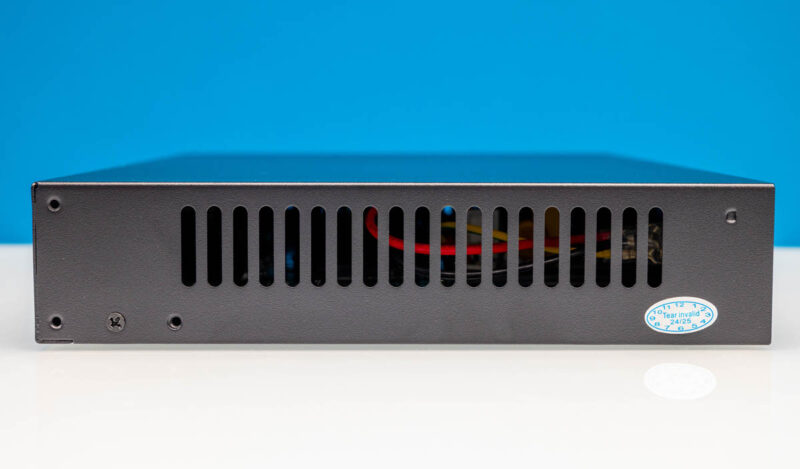
Those side holes can be used with the included rackmount ears.
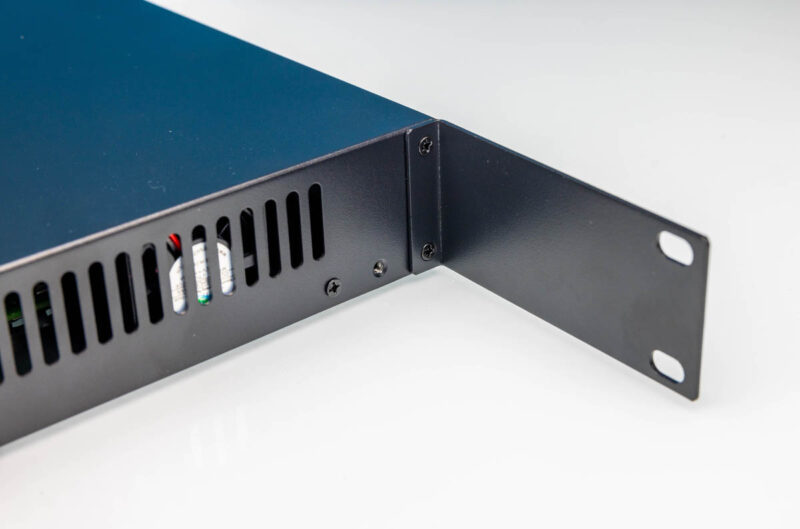
The other side of the switch has a vent, but we can see a fan. This is not a fanless switch as it can get into the 30W range of power consumption which is too much for a design like this to cool passively.

The rear has an AC input and a grounding point.

The bottom has a fun feature. There are four “feet” but these “feet” are extrusions in the sheet metal. Usually, we would see either a flat area or a concave area for rubber feet. Here, it must have been less expensive to shape the metal than add a $1 set of rubber feet to the box.

If, at this point, you are thinking, “This is almost exactly like the NICGIGA non-PoE switch,” you would be correct. We just swapped photos in our hardware overview because from the outside the biggest changes are the labels stuck on the front and bottom.
Of course, this is STH, so we needed to get inside the switch to see how it works. Here is the overview with the power supply at the top, the fan at the left, and the main switch PCB in the middle.

This is where things get appreciably different. Here is the NICGIGA non-PoE version for reference:

The SR-ST3008P V1.2 board is the same between the two, but we get a larger internal power supply, a PoE board, and a slightly different and longer chassis.
The power supply is an internal unit. We have seen many power supplies like this, but let us just say no UL markings, and an unknown power supply will turn many off. Still, it has worked for us so far.
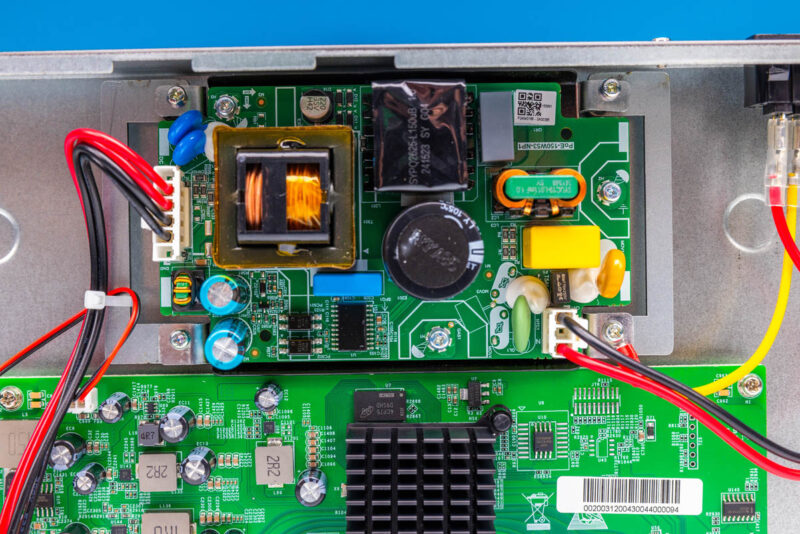
Aside from the output wiring of the power supply being different than on the NICGIGA, we also see what appears to be a larger PSU labeled PoE-150W53-NP1. It almost feels like that is a 150W 53V power supply based on the name.

On the left side, we get the fan. This is a simple 2-wire design, so we do not get 3-pin or 4-pin headers. Also, there is another spot to mount a fan, but we do not have an additional header to do so.

For the main switch chip, we have a Realtek RTL9303. The big heatsink is for the main switch chip, and the smaller heatsinks are for the PHYs. As you can see, the PHY heatsinks are glued and they are not aligned close to perfectly.

That switch chip needs PHYs for 10Gbase-T, and so we have one per port. Between those PHY heatsinks and the ports, we have another new feature.
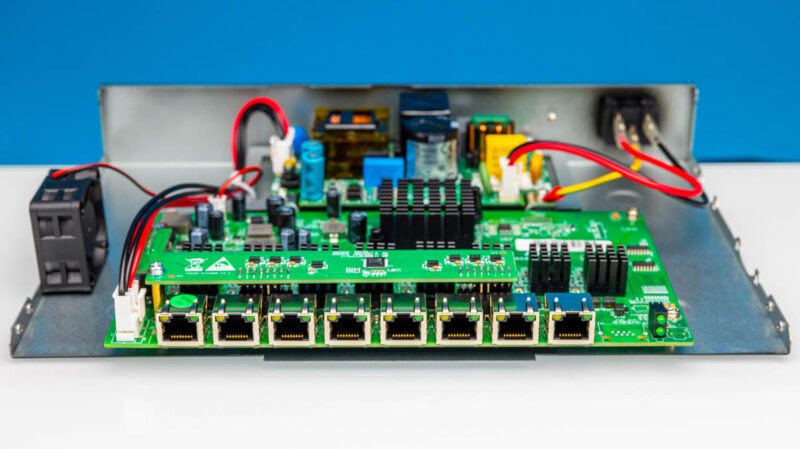
Here is a quick look at the PoE board that is added in this PoE version:

Here is another angle:
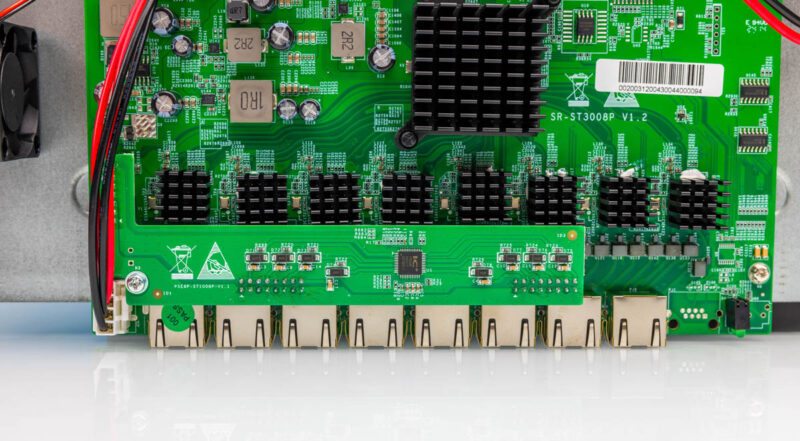
Next, let us get to the big chips used here.



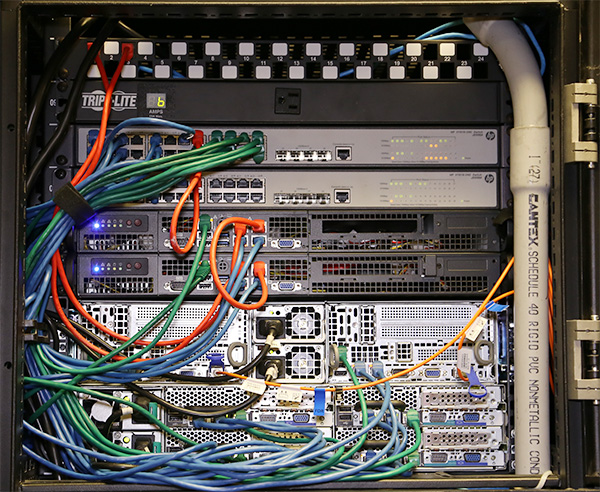

Out of curiosity, would it be hard to explicitly call out 802.3bz support clearly rather than mentioning it in passing in one of the paragraphs?
Reasoning: The more coverage of low price switches that support 802.3bz, the more pressure put on the ridiculously overpriced mainstream switches who’s main differentiator is 802.3bz support.
I purchased the YuanLey 8 port 10 gbe unit and it was very loud, almost vacuum cleaner levels. I bought from Amazon in late June 2024 and I would not buy this for a home office unless you had an area that was isolated.
Your sound tests are also not what others on Amazon reported, did you test the YuanLey unit or did you mix up the sound levels from the two units?